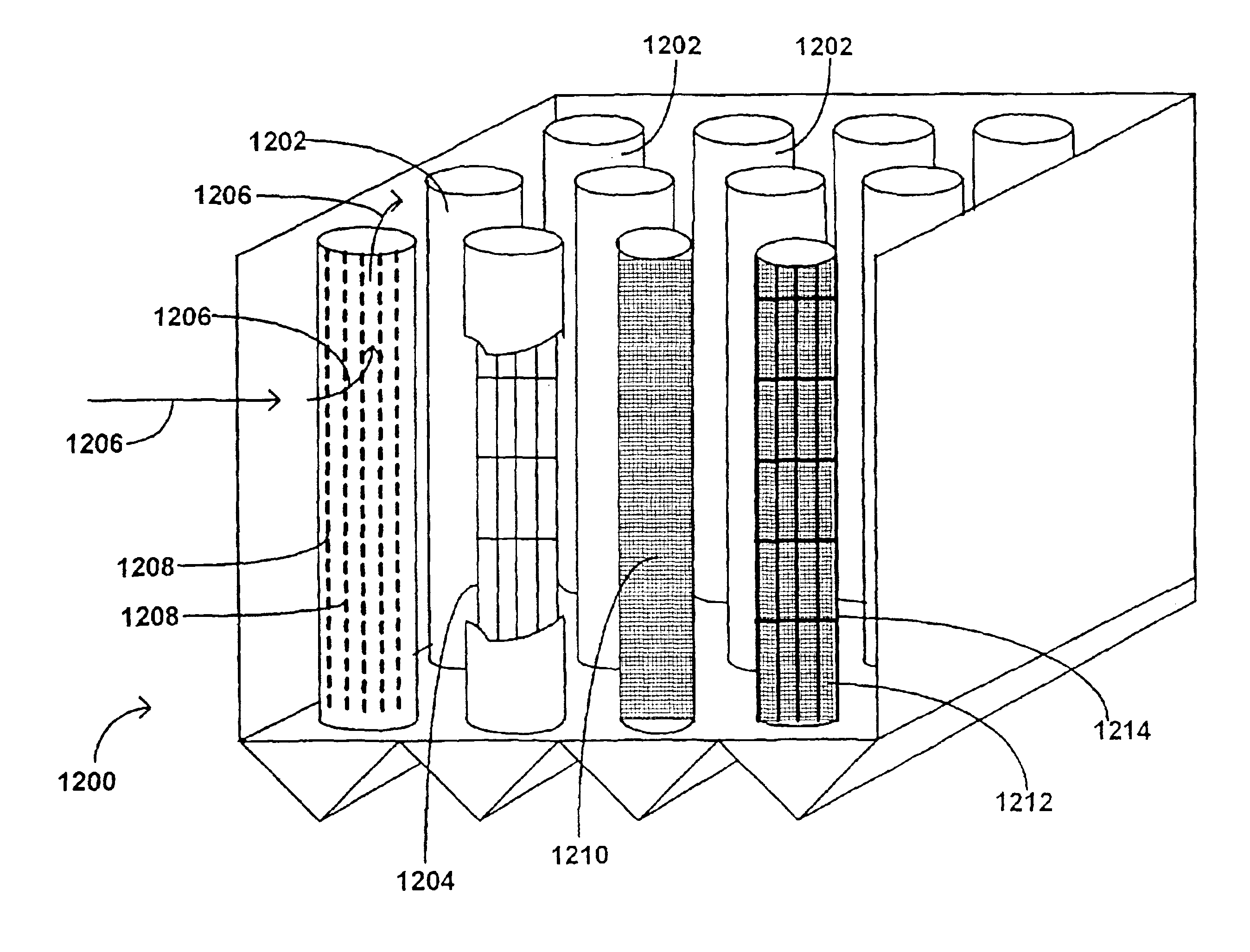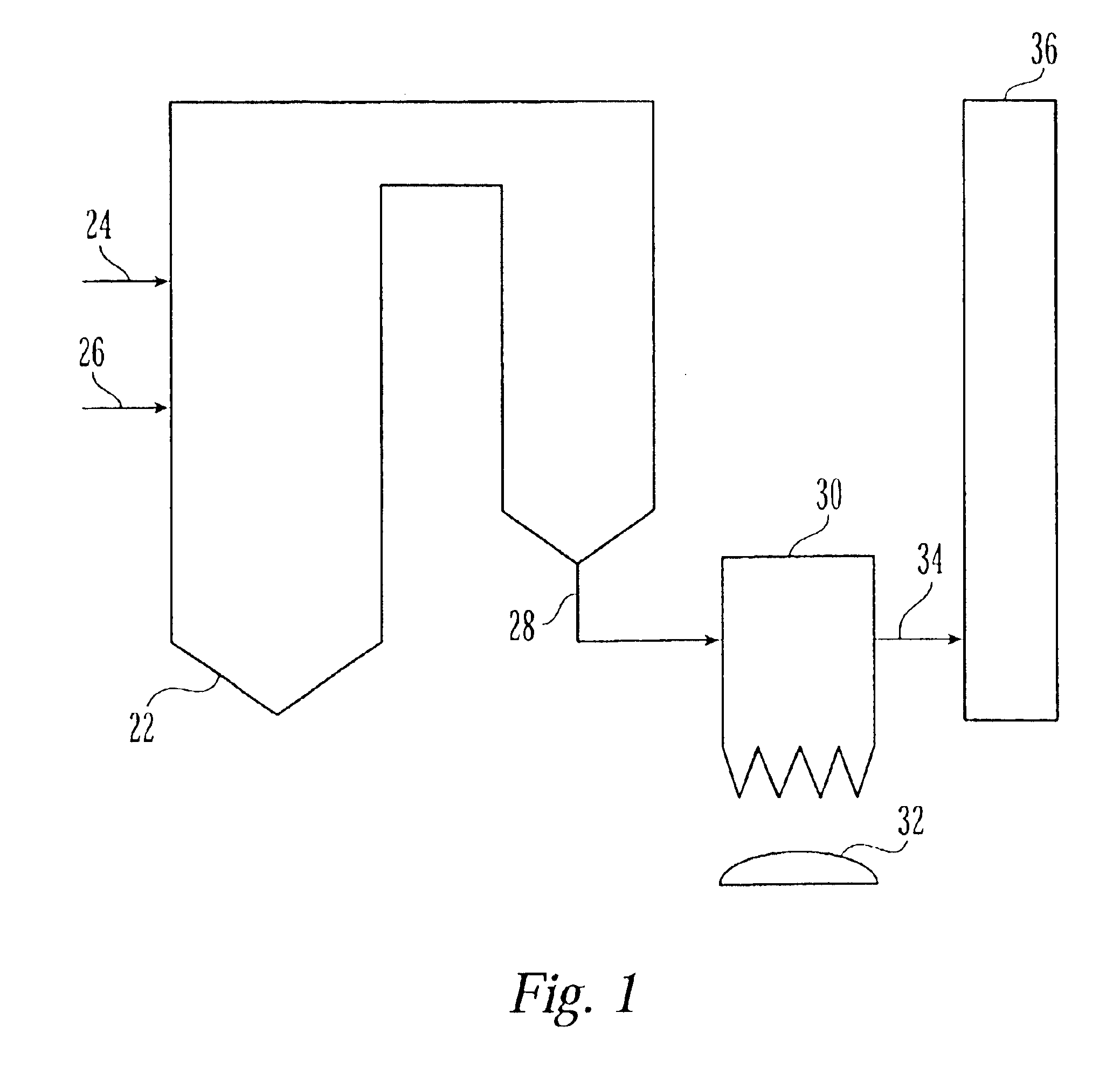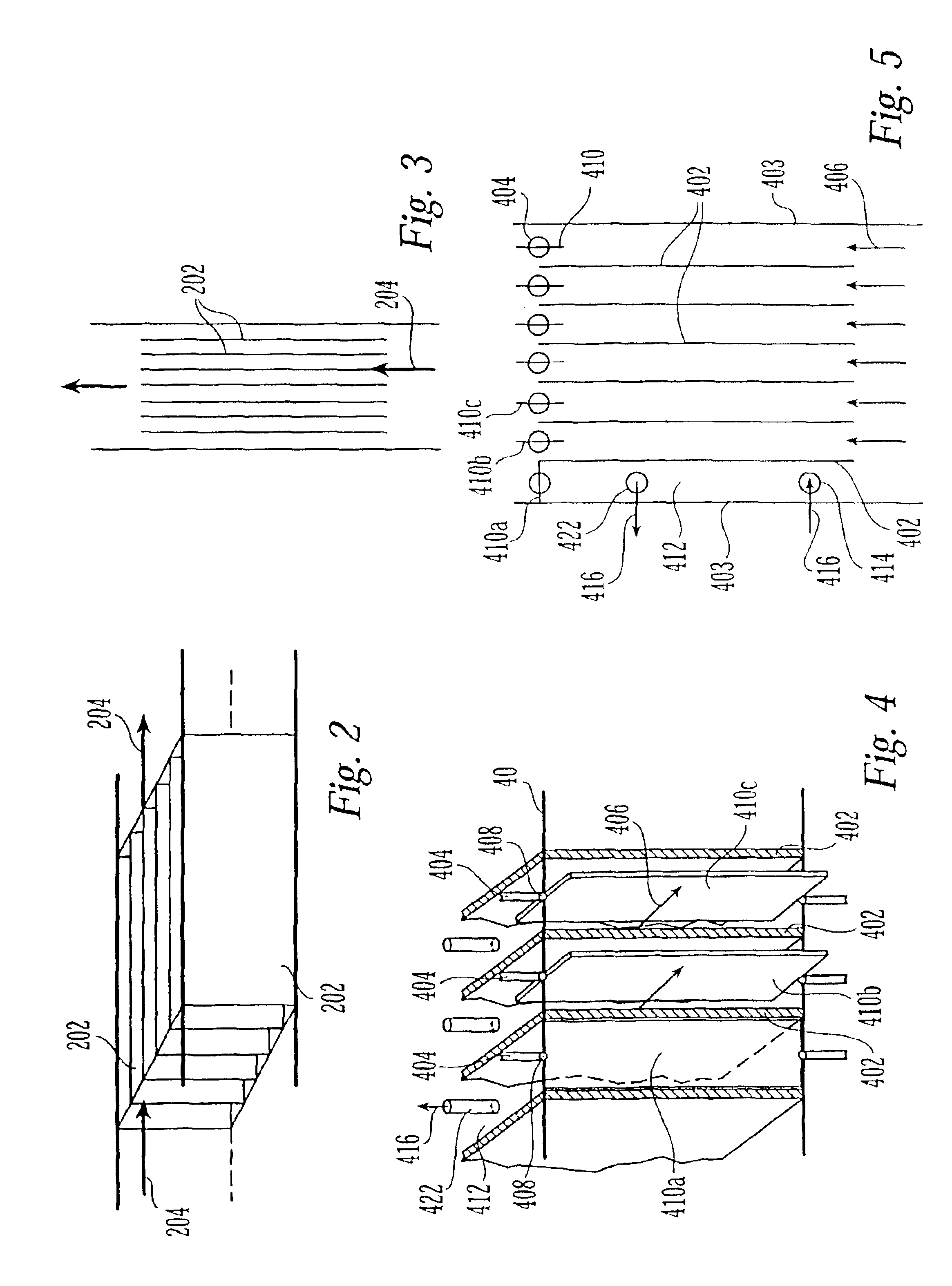Method and apparatus for removing vapor phase contaminants from a flue gas stream
- Summary
- Abstract
- Description
- Claims
- Application Information
AI Technical Summary
Benefits of technology
Problems solved by technology
Method used
Image
Examples
example 1
[0077]Tests have been conducted in the laboratory and at 7 power plants burning lignite, PRB and bituminous coals to determine real-time mercury removal across gold-coated plates and mercury removal following several weeks of exposure to flue gas at each plant. Tests were conducted downstream of ESPs, scrubbers, spray dryers, and baghouses. FIG. 8 presents the results from these tests as a function of the plate length, where the plates were spaced approximately 0.5 inches apart. In one test, 90% mercury removal was achieved using plates having a length of 10 ft that were spaced approximately 0.5 inches apart at a flue gas velocity of 50 ft / s and a resulting pressure drop of less than 3 inches of water.
example 2
[0078]Field tests have been conducted using gold as the sorbent surface downstream of both a wet and dry sulfur dioxide scrubber. Using lignite coal, 70-90% mercury removal was obtained downstream of a spray dryer baghouse configuration at a gas velocity of 30-40 ft / s. The gold plates were 10 ft long and spaced 0.5 inches apart resulting in a pressure drop of approximately 2 inches of water. Tests also showed that the gold-coated plates may be thermally regenerated without degradation of the adsorption capacity. Tests using gold plates 1-3 ft in length with 0.25 inch spacing downstream of a wet scrubber with 8-17 scfm flue gas flow showed 63-95% mercury removal. The gold plates were continuously wetted with wash water from a full-scale mist eliminator.
PUM
 Login to View More
Login to View More Abstract
Description
Claims
Application Information
 Login to View More
Login to View More - R&D
- Intellectual Property
- Life Sciences
- Materials
- Tech Scout
- Unparalleled Data Quality
- Higher Quality Content
- 60% Fewer Hallucinations
Browse by: Latest US Patents, China's latest patents, Technical Efficacy Thesaurus, Application Domain, Technology Topic, Popular Technical Reports.
© 2025 PatSnap. All rights reserved.Legal|Privacy policy|Modern Slavery Act Transparency Statement|Sitemap|About US| Contact US: help@patsnap.com



